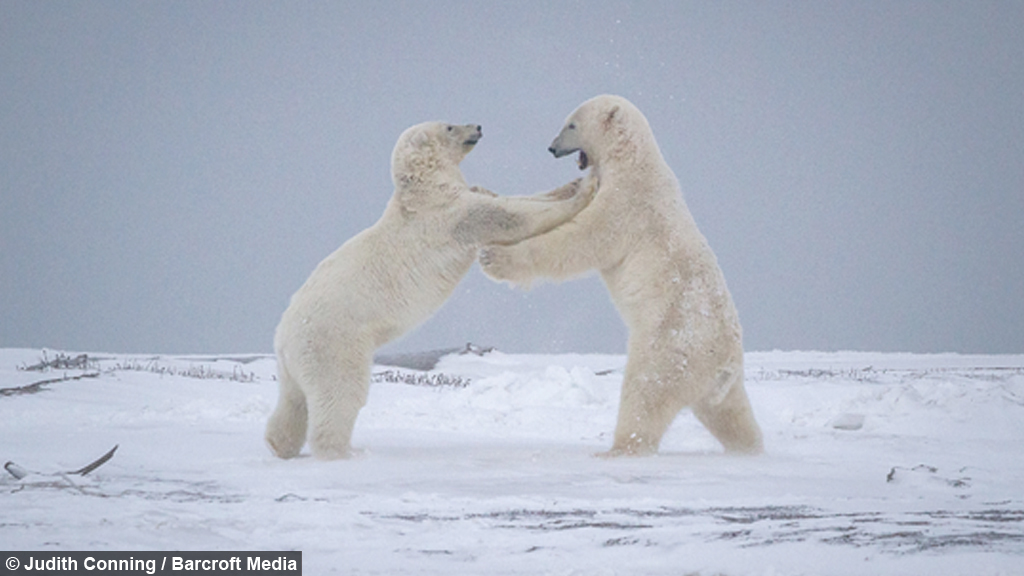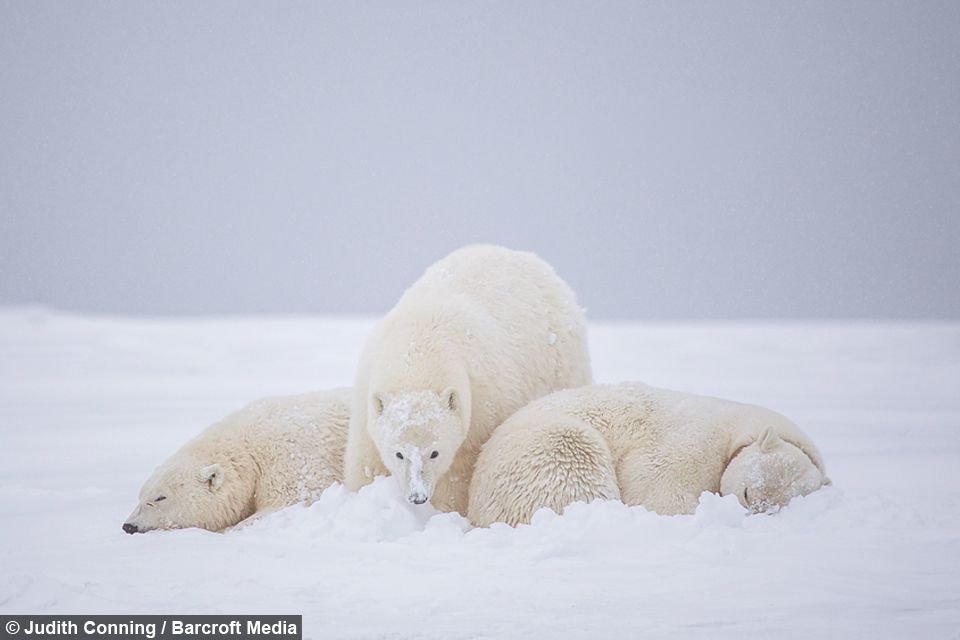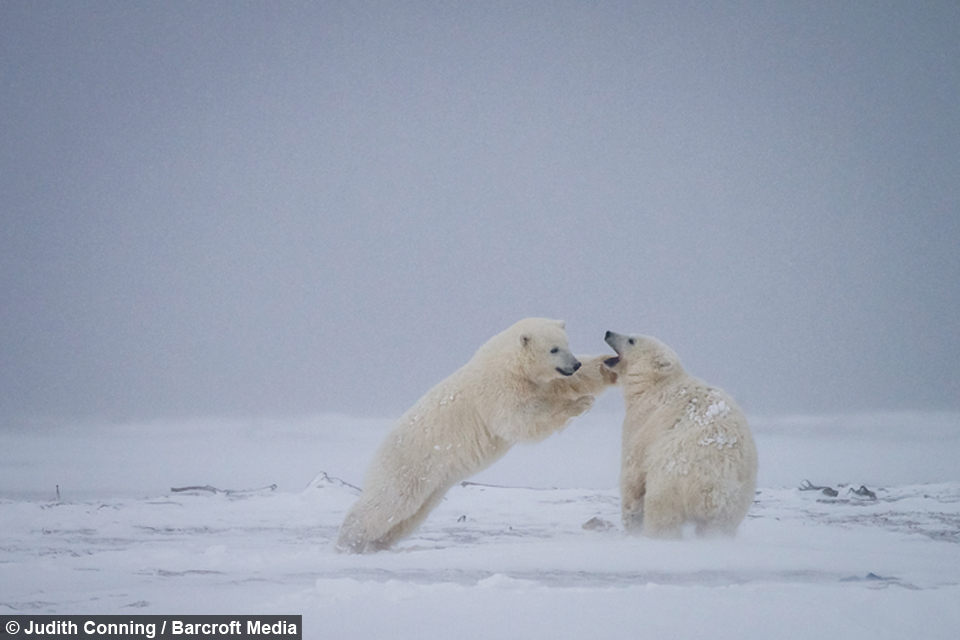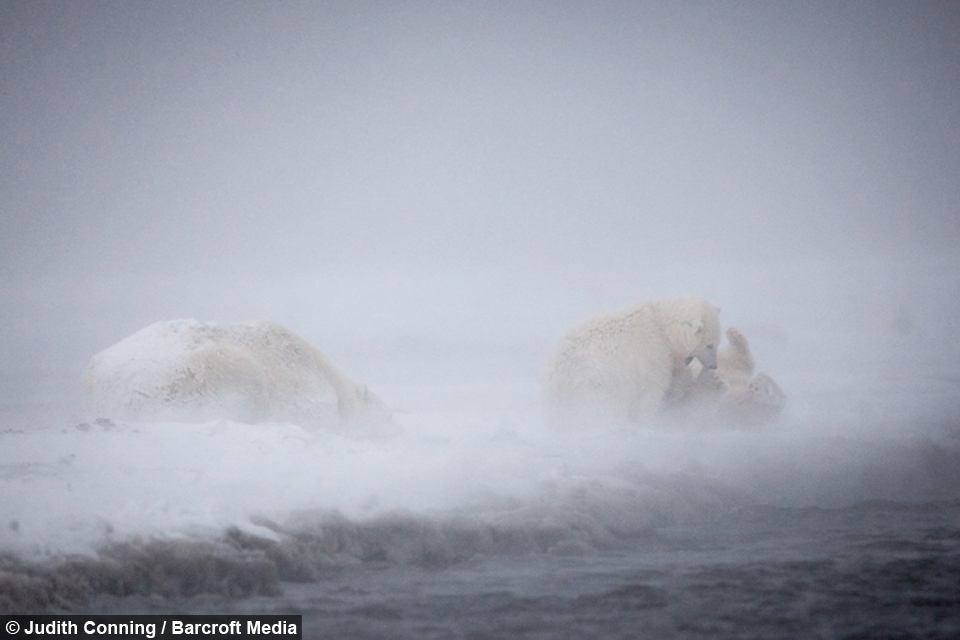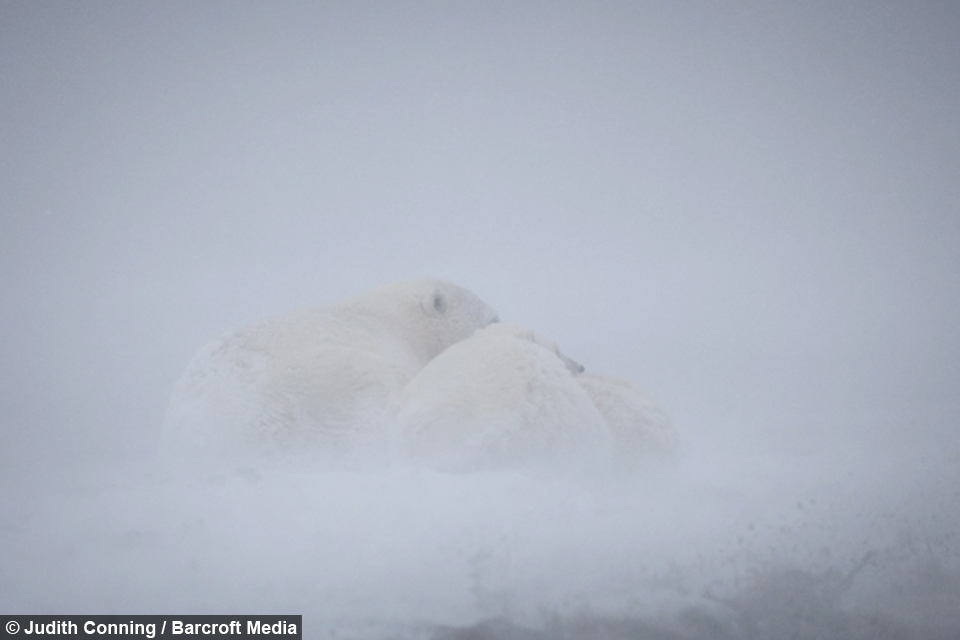Cold War! Polar Bear Cubs Play-Fight During Blizzard
By Rebecca Lewis @RebeccaSLewis
Scroll down for the full story
The mother and cubs were huddling together against the blizzard in Kaktovik, Alaska – 800km north of the Arctic Circle.
Judith Conning, a social worker from Australia, took the trip to the remote town in October last year to watch the family of polar bears prepare to fish on the frozen Beaufort Sea.
While the mothers wanted nothing more than to rest and sleep, the cubs were content with playing in the snow and exploring their surroundings.
While the weather played havoc on Judith’s photographic trip, the bears seemed unperturbed by the blustery conditions.
Judith, whose pictures were awarded the Australian Photography Magazine’s “Nature Photographer of the Year”, said: “The weather kept most people indoors as at times it was impossible to stay upright outside.
“I was overwhelmed by the intelligence, the love, care and protectiveness the mothers show for their cubs. We watched a group of cubs - young ones and teenagers - play and it was for all the world like watching kids in the school yard.
“There was pushing and shoving, making friends and general rough housing with some in the thick of it and others keeping to the sidelines.”
Despite the difficult weather conditions, the rare sighting of the endangered animals moved Judith.
She said: “I want to weep when I think of what may ultimately happen to them.
“I want to weep when I think about how difficult it has already become – how many of them now die of starvation or drown.
I also despair at the fact that fewer and fewer cubs survive to adulthood. I am awed by the privilege of seeing them.”
Just 20,000 polar bears remain in the wild according to the World Wild Fund For Nature, and their survival is threatened by the loss of sea ice, which they use as a platform to hunt seals, rest and breed.
